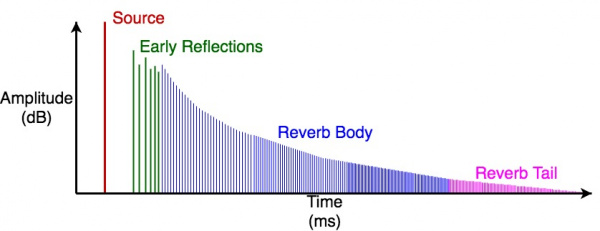Artificial Reverberation for Embedded Systems
From iis-projects
Contents
Short Description
Artificial reverberation is widely used in acoustics, music production, concerts, and gaming with the purpose of modeling specific acoustic environments (concert halls, small rooms, caves, etc.) or improving realism. However, most existing digital signal processing (DSP)-based reverberation techniques require large amounts of memory to model the propagation of acoustic waves in large rooms. In fact, storing 24-bit stereo samples at a 96kHz sampling rate for one second already requires well over 4.5Mbit storage, which is prohibitive for most embedded applications.
The goal of this project is to design and implement a novel artificial reverberation algorithm that requires a minimum amount of storage. First, the student(s) will optimize an existing “tiny” reverberation method developed in the IIP Group. Then, the student(s) will develop a VLSI architecture that efficiently processes the optimized algorithm. Third, the student(s) will implement the architecture in a modern CMOS process and send a chip to fabrication. The fabricated chip should be able to apply the "tiny" reverberation algorithm in real-time to signals sampled at a stereo ADC.
Status: Available
- Looking for 1-2 Semester/Bachelor/Master students
- Contact: Christoph Studer
Prerequisites
- Strong interest in music and audio signal processing
- At least one digital signal processing course
- VLSI 1
- VLSI 2 (recommended but not mandatory)
Character
- 20% Algorithm optimization
- 40% Architecture development
- 40% VLSI design
